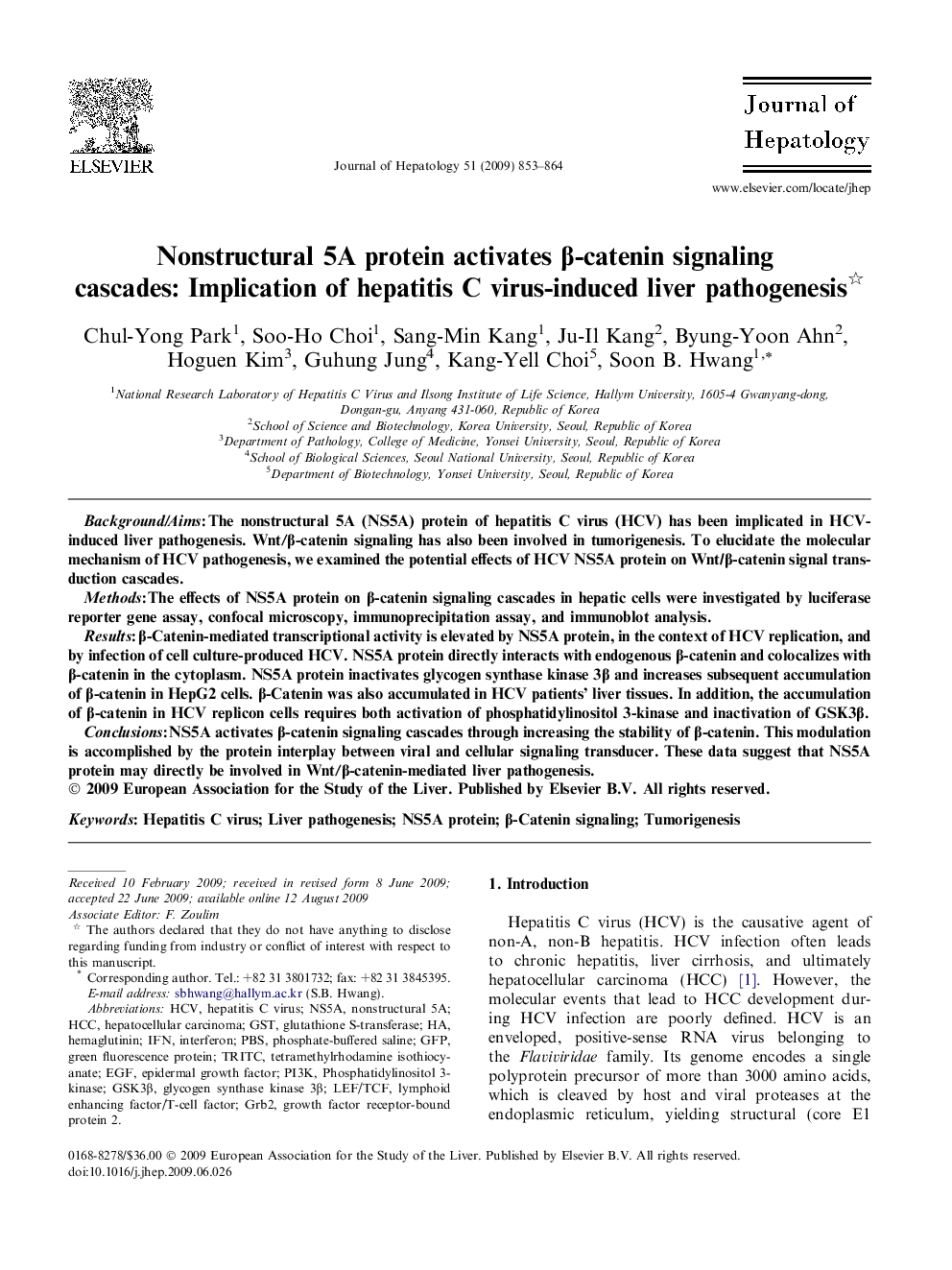| Article ID | Journal | Published Year | Pages | File Type |
|---|---|---|---|---|
| 6109950 | Journal of Hepatology | 2009 | 12 Pages |
Background/AimsThe nonstructural 5A (NS5A) protein of hepatitis C virus (HCV) has been implicated in HCV-induced liver pathogenesis. Wnt/β-catenin signaling has also been involved in tumorigenesis. To elucidate the molecular mechanism of HCV pathogenesis, we examined the potential effects of HCV NS5A protein on Wnt/β-catenin signal transduction cascades.MethodsThe effects of NS5A protein on β-catenin signaling cascades in hepatic cells were investigated by luciferase reporter gene assay, confocal microscopy, immunoprecipitation assay, and immunoblot analysis.Resultsβ-Catenin-mediated transcriptional activity is elevated by NS5A protein, in the context of HCV replication, and by infection of cell culture-produced HCV. NS5A protein directly interacts with endogenous β-catenin and colocalizes with β-catenin in the cytoplasm. NS5A protein inactivates glycogen synthase kinase 3β and increases subsequent accumulation of β-catenin in HepG2 cells. β-Catenin was also accumulated in HCV patients' liver tissues. In addition, the accumulation of β-catenin in HCV replicon cells requires both activation of phosphatidylinositol 3-kinase and inactivation of GSK3β.ConclusionsNS5A activates β-catenin signaling cascades through increasing the stability of β-catenin. This modulation is accomplished by the protein interplay between viral and cellular signaling transducer. These data suggest that NS5A protein may directly be involved in Wnt/β-catenin-mediated liver pathogenesis.
